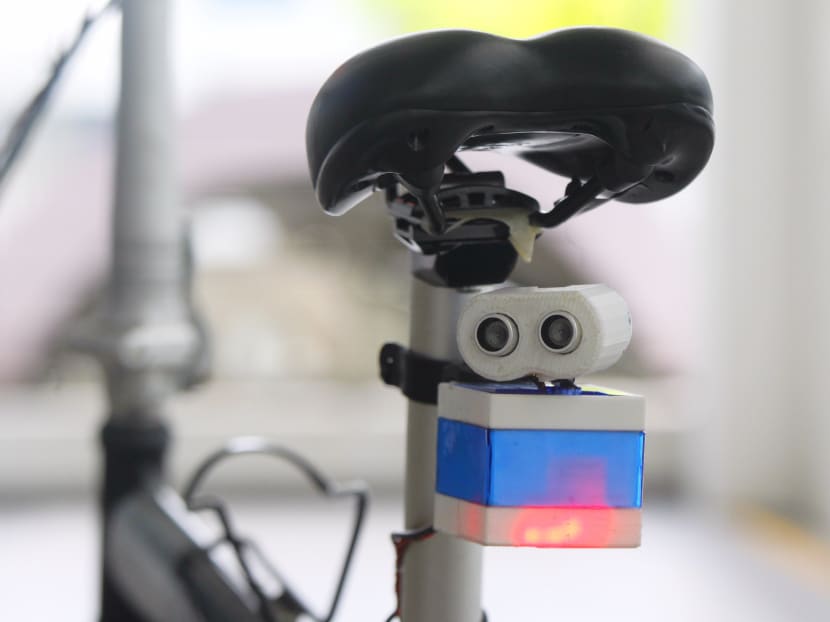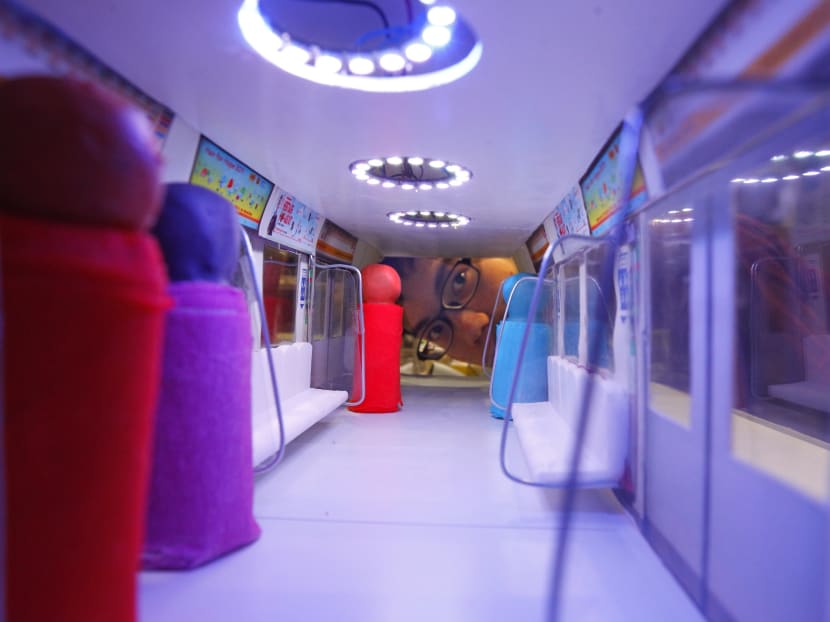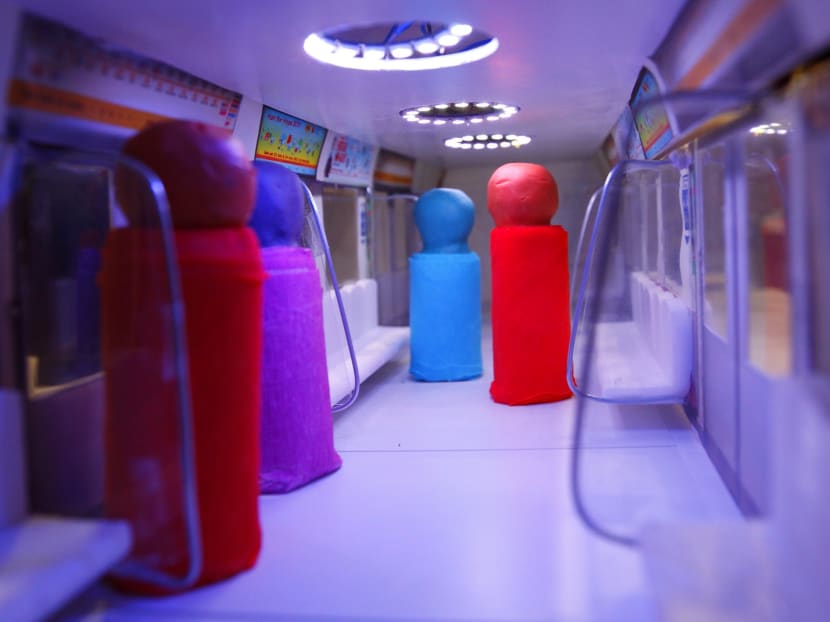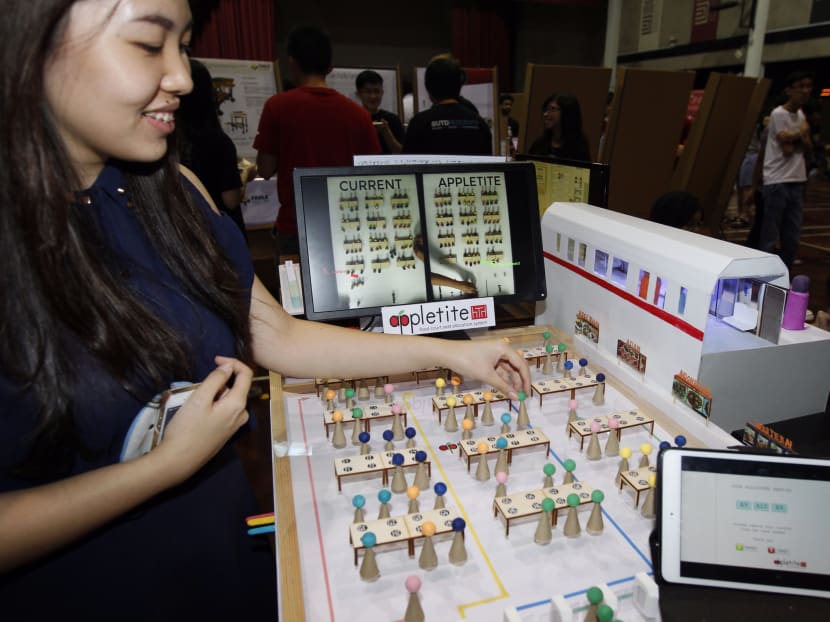Designing solutions for social change
SINGAPORE — When a vehicle comes within 5.5m, the bicycle’s handlebar vibrates and indicator lights mounted on it will show which direction it is coming from. The rear light will also light up to remind the motorist to keep a safe distance. These safety measures are all triggered by an oscillating ultrasonic sensor fixed at the rear of a bicycle.




SINGAPORE — When a vehicle comes within 5.5m, the bicycle’s handlebar vibrates and indicator lights mounted on it will show which direction it is coming from. The rear light will also light up to remind the motorist to keep a safe distance. These safety measures are all triggered by an oscillating ultrasonic sensor fixed at the rear of a bicycle.
This creation was among the 49 ideas dreamt up by Singapore University of Technology and Design (SUTD) first-year students to tackle problems that are prevalent in Singapore, such as overcrowding and food wastage.
Mr Tan Yu Jie, 21, one of the six students behind the bicycle safety system, said that his team had come up with the idea because cycling is becoming more common in Singapore, with the Government also making a push to encourage this environmentally-friendly transport option.
“Singapore is promoting cycling, and there have also been more accidents on the roads these days, so this was what pushed us to come up with a product that tackles an actual problem at hand,” he said.
Mr Tan also said that his team wants to make further improvements to the product before taking it further. “For example, we want to add rear lights that will intensify as cars get nearer, and we want to get a better ultrasonic sensor as well. We also hope to keep it affordable at S$100 or less,” he added.
Apart from the bicycle safety system, SUTD students have also come up with a solution to tackle waste management and encourage recycling in hawker centres.
This involves having separate compartments at tables for aluminium cans, general waste and food waste for patrons to deposit their refuse. The food waste will then be sent to a composter to create compost for surrounding greenery in the hawker centre.
“People might ask why they should recycle, and why they should dispose of their waste. So we want to bring out the tangible benefits by showing how something useless like food waste can be generated to make something new like the greenery around,” said Mr Milton Li, 21, one of the students behind the project.
While the solution has not undergone testing yet, the students hope to try it out in their school’s canteen before bringing the idea to hawker centres.
Another group of students devised a solution to manage overcrowding in food courts. Using gantries at the entrances, customers will only be let in if there are free tables. The system will also show customers where these seats are using a tablet at the entrance.
Other ideas include tackling the overcrowding problem in trains, whereby commuters can activate LED lights to alert others to make way for those alighting by waving at sensors placed at the door.
Dr Chong Keng Hua, a founding member of SUTD’s Opportunity Lab — an interdisciplinary lab focusing on enhancing the role that design and designers play in social change — said: “Most of the ideas that the students have come up with are very interesting, and although they are not patented yet, we can do so if the relevant industries are interested in them.”






